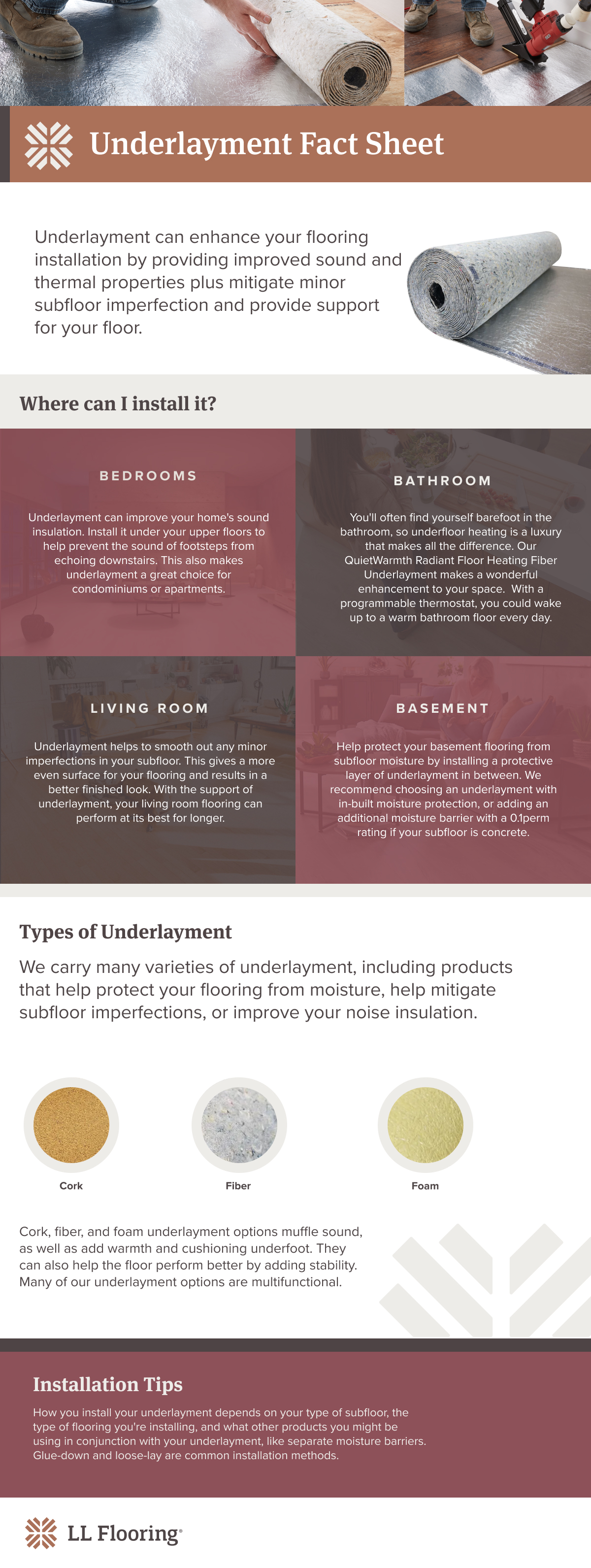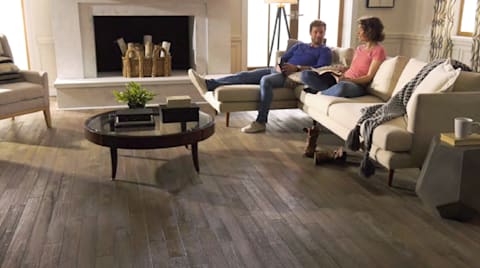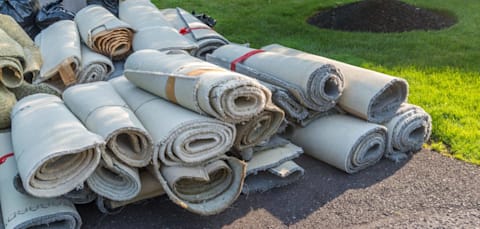- Home
- Education
- Buying Guides
- Buying Guide: Shop for Underlayment for Your Flooring
Buying Guide: Shop for Underlayment for Your Flooring
Certain types of underlayment are designed for use with specific types of flooring, so it's important to be sure you're selecting one that works with your flooring.
Underlayment is a thin layer of material, often made of fiber, foam, felt, or recycled fabrics, that sits between your home's subfloor and flooring. It improves your flooring's performance while providing additional support. For these reasons, underlayment is often considered an essential element of high-quality floors.
To start with, underlayment helps mitigate any minor imperfections in the subfloor so that your flooring planks can sit evenly together. It also provides support for your floor's seams and allows floating floors to expand and contract freely. It can help insulate your home from excessive noise that can come when walking on hard floors and provide enhanced thermal properties. And it can also give your floors protection from moisture damage, but does not eliminate the requirement for a moisture barrier—such as the 6mm poly you'd need to lay over concrete—unless the underlayment is rated as such.
At LL Flooring, you'll find a range of underlayment selections to choose from, with a variety of different features and advantages. Certain types of underlayment are designed for use with specific types of flooring, so it's important to be sure you're selecting one that works with your flooring. Most of all, of course, it's important to understand the many features underlayment can offer, so you can be sure to choose the best option for your home.
A Flat Surface for Your New Flooring
Your subfloor is often made of plywood or concrete. These subfloors can contain imperfections, such as uneven surfaces pocked with dips or rises. Laying planking directly onto an uneven subfloor will likely cause your flooring to shift, forcing planks to put pressure on adjacent planks, which can cause seam failure and noise underfoot.
A Soft, Even Layer
Underlayment solves this problem by providing a firm, strong layer for your planking to sit on. Simply roll out your underlayment on top of your subfloor to cover up any imperfections that might cause your planks to lay unevenly. The result will be flooring that sits evenly in your home and offers beauty and performance that can last decades.
Support for Your Flooring (and Your Feet)
The thin layers of recycled foam, felt, and fiber provide the right amount of give and support so your floors perform to their utmost potential. If planking is laid directly onto hard, unforgiving subfloors of concrete or plywood, then they'll likely feel hard and unforgiving when you walk on them. Soft, gentle materials such as foam, felt, and recycled fibers provide cushioning so your floors feel softer under your feet.
Slip Prevention
Concrete and plywood subfloor sometimes lack the adhesion necessary to prevent your planking from slipping, which can cause damage to your floors. The fibers and materials that underlayment uses provide more friction and grip on your planking, so they'll be less likely to slip or shift.
Improved Sound Insulation for a More Peaceful Home
While hard floors such as engineered hardwoods, laminates, vinyl, and solid hardwoods can grace your interiors with beautiful colors, textures, and graining, when people wearing hard-soled shoes or boots walk on them, the steps can sometimes be heard even in adjacent rooms. Underlayment can improve your home's sound insulation, so footsteps and other noises won't echo quite so loudly through your space. The carefully engineered composition of materials helps absorb the soundwaves so your home can be a peaceful haven.
Moisture Protection Helps Ensure Long-Lasting Floors
For floors made of wood and wood products especially, moisture can present significant risks and problems. It can rise up from your subfloor and seep into your planking to cause your wood to expand, buckle, and warp. Your underlayment helps prevent such damage by providing another barrier for moisture to work through before it reaches your wood flooring. It absorbs the remaining moisture so your wood planks stay dry and protected, allowing them to perform at their best for decades to come.

QuietWalk makes a big difference in the home, just read the reviews on the product page of this quality underlayment.
Easy Installation for Quick and Simple Improvements
Installing methods for underlayment can vary depending on the type of flooring you're installing. Certain types of underlayment and flooring will require specialized tapes, so it's important to pay attention to what your items specify.
Click-and-Lock Installation
For click-and-lock floating floors, simply unroll your underlayment atop the clean, flat, dry subfloor. Your underlayment instructions will specify which side should face the subfloor and which side is meant to touch your planking. Once your underlayment is laid out, click-and-lock planking floats right over it and the underlayment provides the support your planks need.
Glue-Down Flooring
For glue-down and double-glue-down flooring, you use glue to adhere your underlayment to the subfloor, and then use a roller to even out the underlayment. Once that's done, you secure the flooring planks to the top of the underlayment using more glue.
Powerful Improvements at a Minimal Cost
Underlayment is a cost-effective option, offering impressive improvement in your flooring's performance for a minimal expense. Installing underlayment is a great way to improve the sound and thermal properties and general comfort of your flooring.
Get the Most from Your New Flooring
New flooring is a significant home investment, so you'll want to ensure that you give your floors the platform to perform at their best. Underlayment helps you achieve this goal, offering stronger support, reduced noise, more security for your planks, and improved moisture protection. Explore the underlayment choices available at LL Flooring to make sure you get the most from your new flooring.

Do you like ideas and how-to videos about design and decor on YouTube? Subscribe to the LL Flooring YouTube Channel and get notified about new videos!





